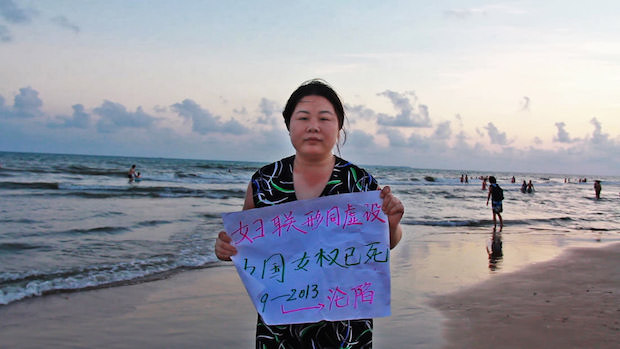 Back to selection
Back to selection
Director/DP Nanfu Wang on Sundance Doc Hooligan Sparrow and the Perils of Political Filmmaking in China
 Hooligan Sparrow
Hooligan Sparrow Nanfu Wang makes her debut as a feature film director and cinematographer in Hooligan Sparrow, a documentary profile of human rights activist Ye Haiyan. The film, which participated in IFP’s Filmmaker Lab and the Sundance Institute’s Creative Producing Summit and Lab, is the work of a self-proclaimed “one-woman-band.” Here, Wang discusses her many run-ins with government agents and the intimidation she felt as a filmmaker highlighting political dissent in China.
Filmmaker: How and why did you wind up being the cinematographer of your film? What were the factors and attributes that led to your being hired for this job?
Wang: When I made Hooligan Sparrow, I had no choice – I couldn’t afford to hire a cinematographer. But even if I could have afforded it, I still would have chosen to shoot the film myself because I enjoy exploring my surroundings and engaging with my subjects through the lens. I like how the camera becomes part of my body; it’s hard to describe, but I feel as though the camera allows me to disappear, and in that way I can capture real moments without being a distraction to them. This is one of my favorite aspects of filmmaking.
Filmmaker: What were your artistic goals on this film, and how did you realize them? How did you want your cinematography to enhance the film’s storytelling and treatment of its characters?
Wang: Before I began the production, I told myself that my goal was to capture the smell, the color, the light and the feel of the place I would film. Many people don’t have the opportunity to go to China or to participate in a protest in China, so I hoped that by watching the film, the audience could experience it as if they were there themselves.
Filmmaker: Were there any specific influences on your cinematography, whether they be other films, or visual art, of photography, or something else?
Wang: I can’t pinpoint any specific one. But prior to making this film, for a long time, I used to take visual notes – I watched films on my computer and whenever I saw a shot that struck me, I would pause and take a screenshot of that shot. I had a folder for those screenshots, and I would scroll through them for inspiration.
Filmmaker: What were the biggest challenges posed by production to those goals?
Wang: Outside I was followed everywhere I went by secret police. I found myself in many situations where I wasn’t supposed to be filming – in police stations, amongst activists who were being questioned by police, in front of angry mobs threatening to hurt me if I filmed them. I had to find creative ways to film these situations without being discovered, and though this method of storytelling was very challenging, it ended up revealing a deeper reality about my story than I might have captured had I been able to film more freely.
Filmmaker: What camera did you shoot on? Why did you choose the camera that you did? What lenses did you use?
Wang: I wasn’t able to film with bulky, professional filming equipment, as it would have drawn the attention of police (both uniformed and secret) to the subjects I was filming. To avoid endangering my subjects or myself, I ended up carrying only a backpack with a Canon 60D DSLR camera, a small point-and-shoot, a pair of glasses with an embedded micro camera, a Canon 18-200mm lens and a Canon 50mm lens.
Filmmaker: Describe your approach to lighting.
Wang: I used only natural light. Again, one reason was because I was a one-woman-band, and the circumstances wouldn’t have allowed me to set up lighting equipment. That said, I tend to prefer natural lighting anyway; I find artificial lighting to be immediately recognizable as what it is: artificial. I generally find this distracting.
Filmmaker: What was the most difficult scene to realize and why? And how did you do it?
Wang: There were some scenes where I couldn’t film at all. Though I often managed to film surreptitiously, the scene where I was interviewed by national security agents was totally impossible to film. So, I had to make do with an audio recorder hidden in my pocket.
Filmmaker: Finally, describe the finishing of the film. How much of your look was “baked in” versus realized in the DI?
Wang: Part of what made this film effective, I think, was that the desperate situation in which it was produced is visible in the shooting. I couldn’t scout the location, consider every possible angle, carefully set my camera, and then start shooting. Much of the movie was filmed on the run and, with the exception of the interviews, almost every shot was filmed handheld. But it’s this roughness that helps to convey the environment in which the film was produced.
- Camera: Canon 60D
- Lenses: 18-200 mm, 50 mm
- Lighting: natural light
- Color Grading: Final Frame
